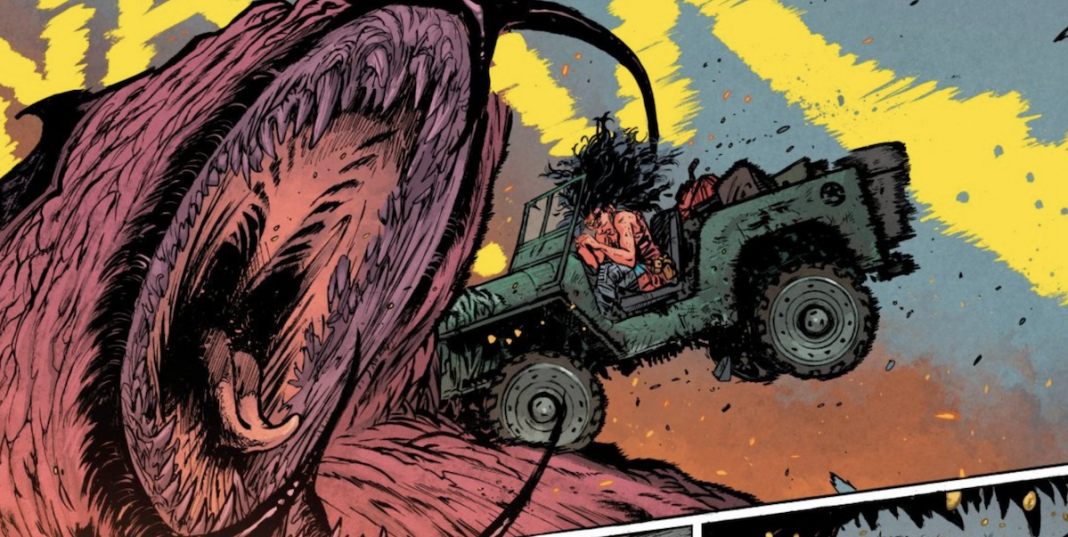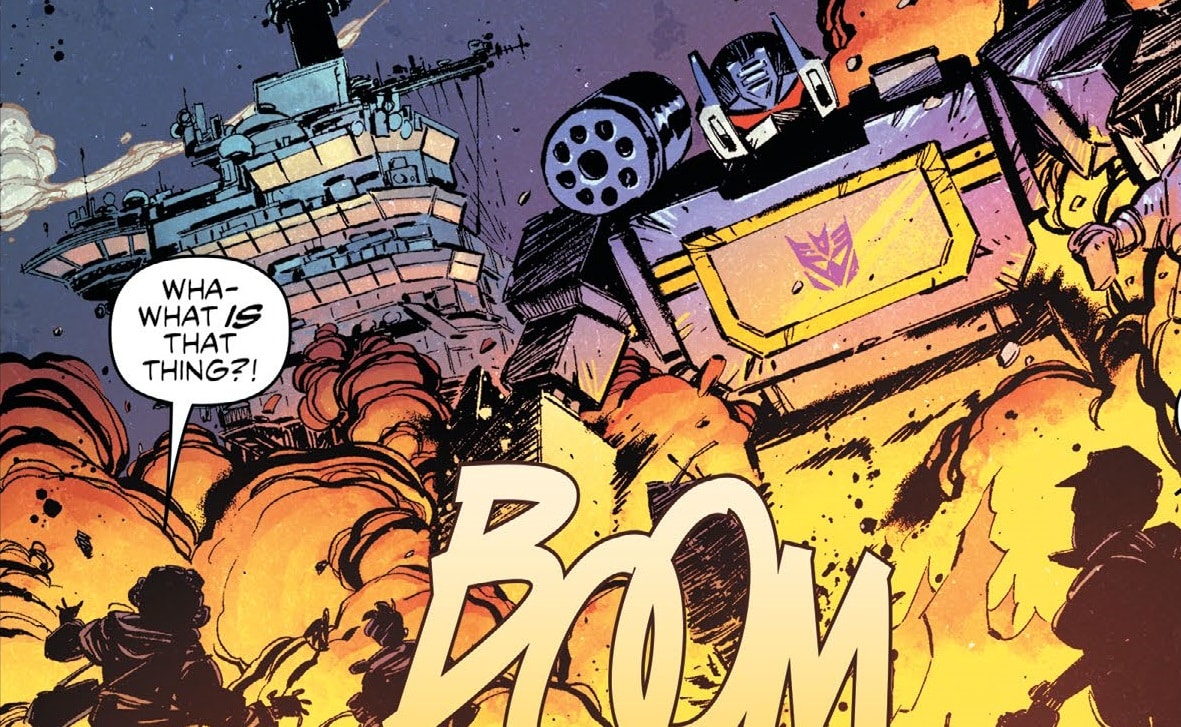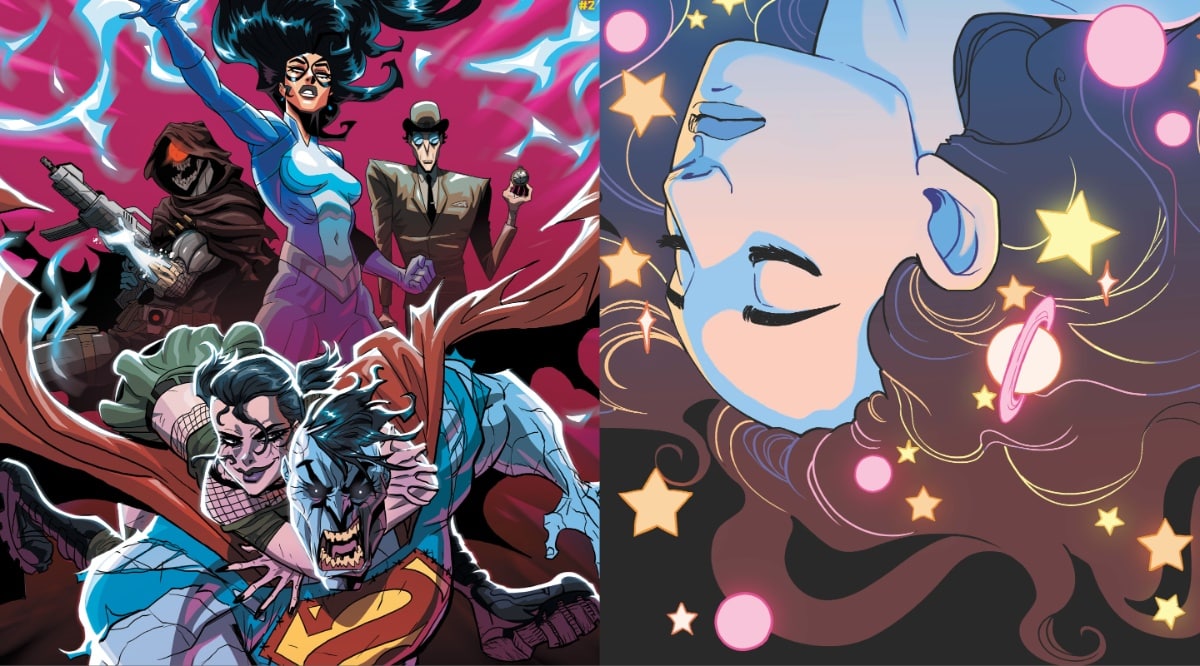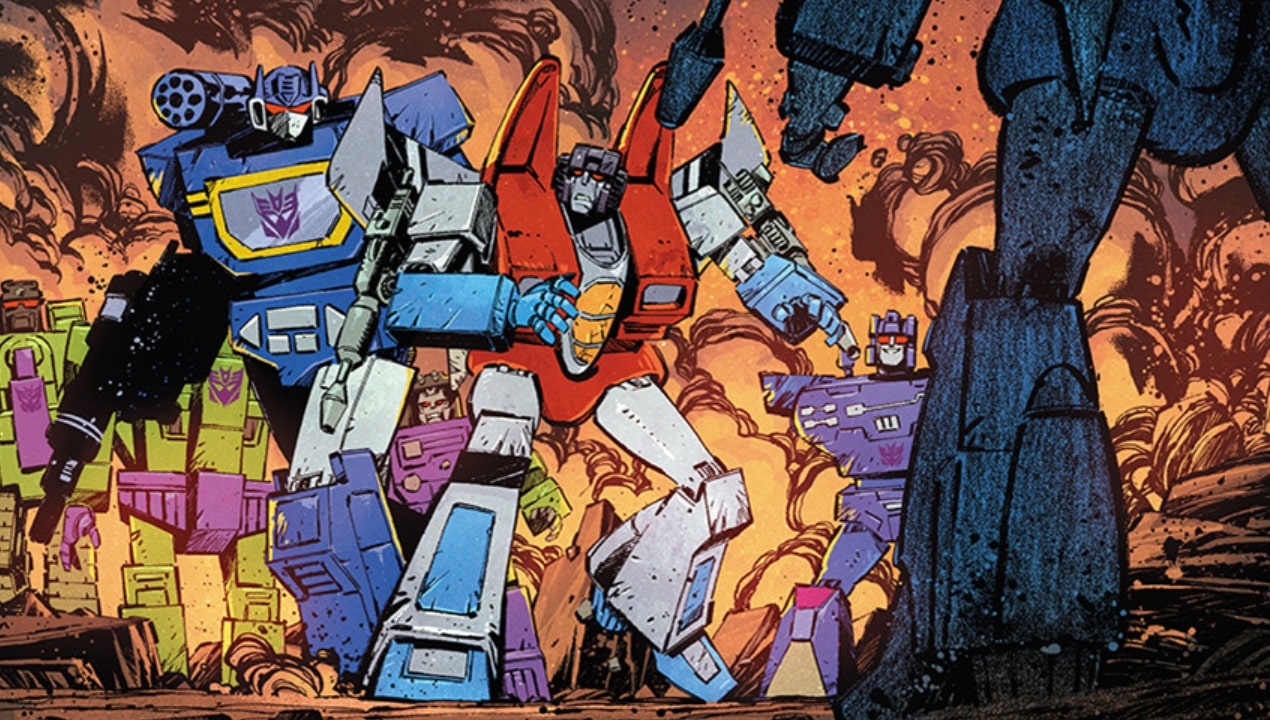Daniel Warren Johnson is the writer and artist on DC’s Wonder Woman: Dead Earth, a Black Label series imagining a world where Diana of Themiscyra is one of the last remaining super heroes on a post-apocalyptic Earth overrun by monsters. Before his first major DC appearance, Johnson made a name for himself in the indie world, first with a webcomic called Space-Mullet. After that, he teamed up with Donny Cates on their Image book The Ghost Fleet, then flew solo again with Extremity in 2017 and Murder Falcon in 2018. Now, aside from his DC work, he’s recently started his own YouTube channel, where he reflects on his journey as an artist and coaches viewers into getting a little bit better each and every day.
Prior to COVID-19’s sweeping changes across the comics industry, new issues of Wonder Woman: Dead Earth were coming out every other month. Just a day before school closures, NBA cancellations and shelter in place recommendations flipped our lives on their heads, Johnson spoke with The Beat about the series he’s working on with longtime collaborators, colorist Mike Spicer and letterer Rus Wooton. In the chat (that feels a bit like a time capsule) we discuss themes, process, and connecting personal experiences with character writing.
Spoilers for Wonder Woman: Dead Earth issues #1 and #2 below.
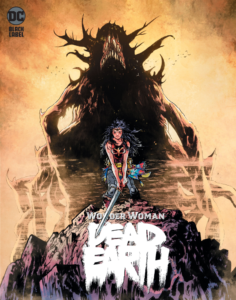
Josh Hilgenberg: Wonder Woman: Dead Earth is a little Mad Max, a little Shonen and a lot of post-apocalyptic. And because of that, the handful of the DCU heroes we see look totally different from what we’re used to. Does that setting make it easier or more difficult to come up with character designs?
Daniel Warren Johnson: Definitely easier, because I can get away with stuff like giving Cheetah an actual Cheetah face for a hand. Because of the schedule, there wasn’t a lot of time to go back and forth with character designs and make sure things were approved, so I’m working my tail off trying to get the book done. It’s a double-edged sword because there are moments where I just need to get things done. But for the most part, DC has been really excited about everything that’s been booked so that’s really great.
Hilgenberg: Obviously you’ve come from more of the creator-owned background with things like Murder Falcon and Extremity, so what was the feeling of taking on these pre-established character for DC?
DWJ: Just because of the nature of working in the big two environment, the stakes felt a lot lower with a character like Wonder Woman. There’s more room for me to step back if the book doesn’t really come out the way I want. It’s just enough distance between me and the corporate character that I can say, well, this is Wonder Woman. If a book comes out that I may work on with a writer, and it gets terrible reviews and nobody buys it, there’s a bit of a disconnect because I worked with a writer and we’re sharing the burden. In the same token, working on a corporate character gives me that same distance. I would never use that as an excuse to do a crappy job on the book, but when I’m working on a book like Murder Falcon it is all me, delivering myself on a silver platter in comic book form to the reader. If someone doesn’t like it, or someone thinks it’s terrible, that feels like a mirror to me as a person. Because of that, even though the Wonder Woman stage was so much bigger, the stakes felt smaller, and I was happy to work on something that was just a little removed from me as a person.
Hilgenberg: So this is a good change of pace for you?
DWJ: It is, it is, and it’s a good experiment for me to take part in because I’m not going to be working on super personal things my whole life. I mean, there’s just not enough life experience for me to fuse into my comic stories.
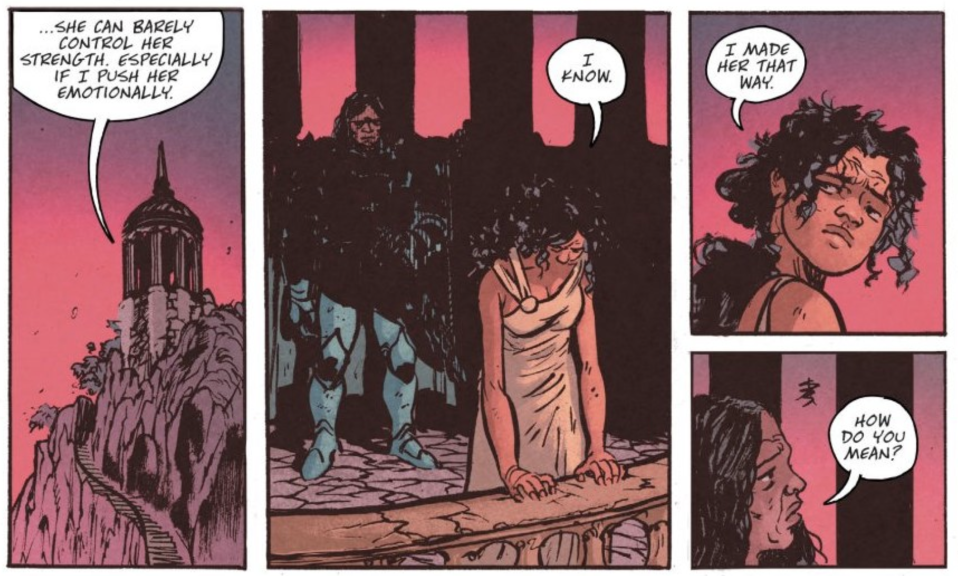
Hilgenberg: Well, speaking of your personhood, I’ve noticed that Dead Earth focuses on Hippolyta and her goal of keeping Diana safe from the outside world, kind of trying to shelter her. Does that come from you being a new dad — and do you find yourself relating to Hippolyta?
DWJ: Yes! have a daughter, her name is Fiona she just turned two in February. She’s awesome. And you’re totally on the money. I was talking to my Uncle Blood when I had that seed of an idea of what I wanted to do with Wonder Woman, but I didn’t know exactly what I was going to do yet. So I was talking to him and I asked him, at what point do you let your kids go? When do you have to step back and let them grow and make mistakes on their own? We had this (friendly) disagreement about buckling down and protecting your own, and that had a big influence on how I started crafting the story of a child made so strong that she can’t be harmed. I was trying to explore the pitfalls of trying to grip too tight to something that you’re not really supposed to be able to control.
Hilgenberg: In the traditional sense Diana is that child who’s unable to be hurt, she’s a superhero. But with Dead Earth #2 you’ve shown that all you have to do to hurt Diana is throw a bomb on everyone she knows, and she’s now struggling with the fact that her family is literal monsters and the people she pledged to protect our metaphorical monsters. How’s she going to reckon with that going forward?
DWJ: One of the things I like about writing Diana is her willingness to put herself on the line. She has this loving character about her, which you don’t really see in Superman or Batman. Wonder Woman is not afraid to say “I love you.” I was also thinking if I couldn’t be harmed by any bullets and if some dude tried to hurt me or my family I could just easily take them out – but that’s kind of a privileged position to be in. So one of the things that I was trying to play with in Dead Earth is if you take those physical perfections away, does that change the mind of Wonder Woman at all?
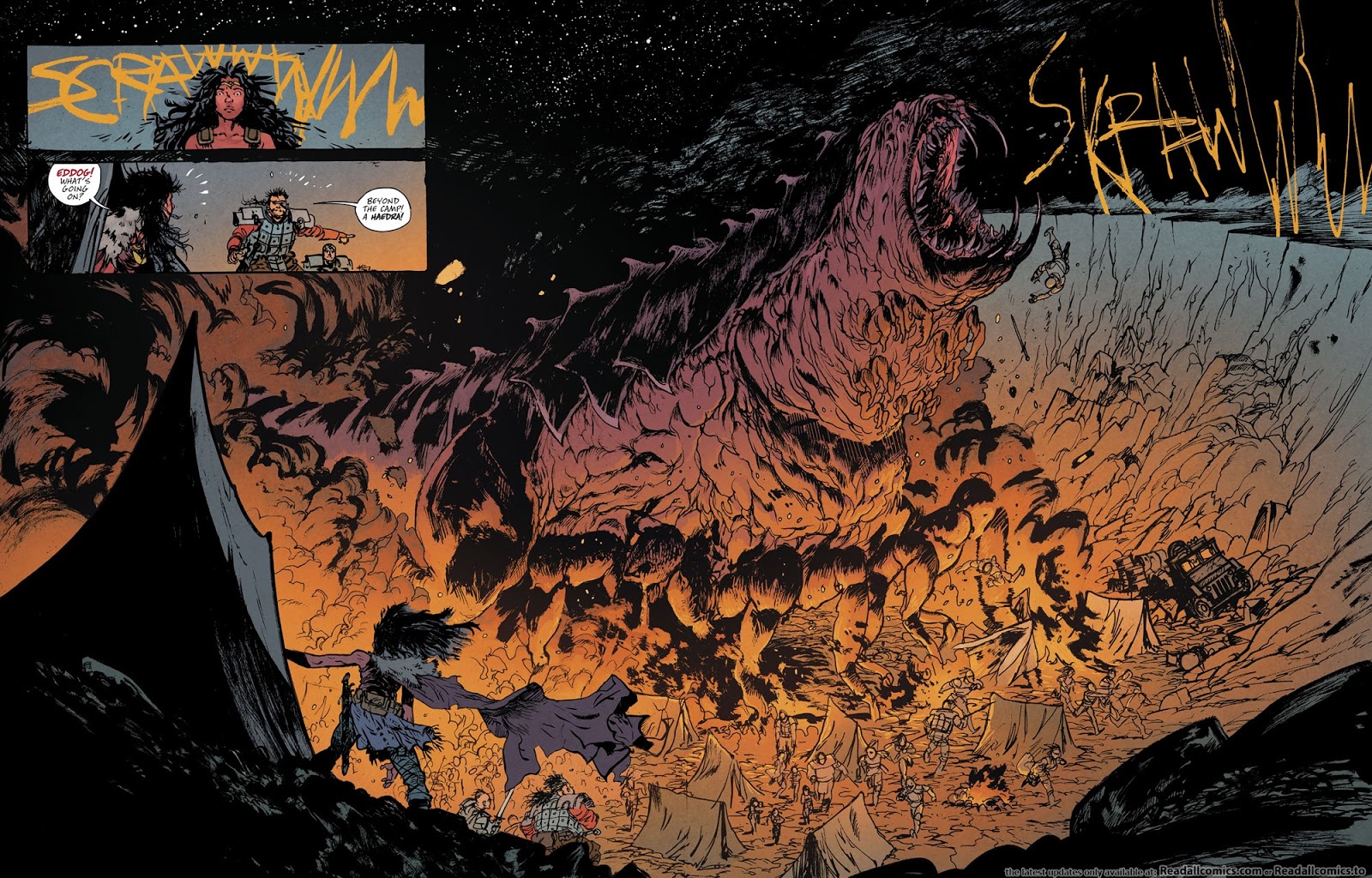
Hilgenberg: So, talking about the Haedra, is there a property or process that you have for your monster inspirations?
DWJ: I wish I could say I sit down before every comic project and I have all my concept art out and I know exactly what I’m doing, but that just never happens. I always start with the best intentions, making sure each issue has a monster design or some sort of design element that will grab people. What winds up happening is, I just have to design on the page, mostly because there’s no time. One thing I’m trying to do is be more active in my sketchbook while I’m listening to something, or watching TV, and I’ll try and find inspiration from there. But most of the time, sadly, it has me fudging it on the page as I make it.
Hilgenberg: (Laughs) It works out pretty well for you! I also wanted to talk about your splash pages, because in any book you do, they always punctuate a moment really well. How do you decide which story beats deserve that full treatment, and how do you go about laying out the panels and pages in the lead up?
DWJ: A lot of my storytelling sensibilities come from manga and Japanese storytelling, and one consistent thing about those mediums is the very strong sense of place. So much manga especially is focused on the backgrounds and the environment and specifics that haven’t translated to American storytelling, because of the smaller page count of a monthly issue. So a lot of the time I’m using these spreads to really introduce my readers into the world that I’ve created and try and get them rooted into the sense of place in one page turn. I’m trying to get that vibe of a place and I’m trying to take people’s breath away. So, it’s me taking the real estate of a comic book page and doing the most with it. And I love composition. I love studying it. If you draw something that’s composed strongly enough it doesn’t matter how much detail or how much work you put into it; it’s always going to look good in some way.
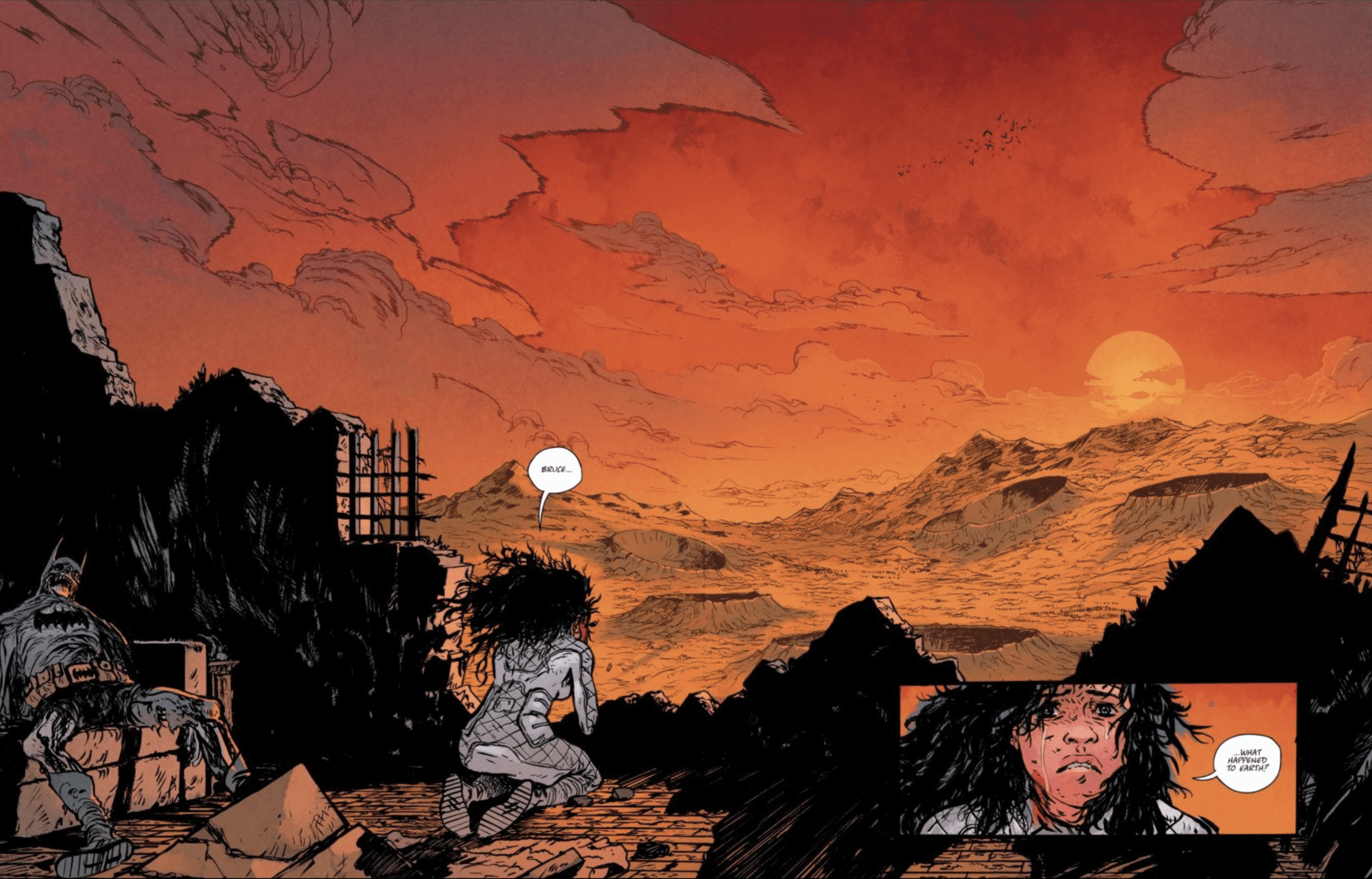
Hilgenberg: Going back to where Diana’s at now, at her lowest point, feeling like almost she wants to give up on humanity, it reminds me of an issue towards the back half of Extremity. The themes of bearing the hate of others on your back and turning the other cheek. Assuming that Diana is going to find the will to fight again, is there something about forgiveness as a theme that’s important to you?
DWJ: I think for Extremity that was the case, it was really important to me. But for Dead Earth, I would say the book is less about forgiveness and more about trust. I think you could definitely read a forgiveness theme into Dead Earth. In Extremity, the idea was that something bad has happened to this character that they need to get over that they need to figure out how to come to terms with. In Dead Earth, we don’t know how things got so bad, but we do find out. There needs to be some sort of forgiveness, but there also needs to be some sort of reconnection of trust and seeing what reconnecting looks like for the world and for the characters.
Hilgenberg: Last question! There’s a DC interview between you and Jim Lee about your initial approach with the company, and you mentioned that you had some C and D list characters in mind to pitch. Is there any chance that we’ll see those come to fruition at all?
DWJ: I can honestly say nothing’s in the works, but that could change in five minutes. I have ideas. Lobo Space Marine is one (you’re welcome DC). But other than that, it’s finishing Dead Earth and looking to the future.
Unfortunately, even though DC has announced an updated release schedule through the end of May, a release date for Wonder Woman: Dead Earth #3 has not yet been revealed.


